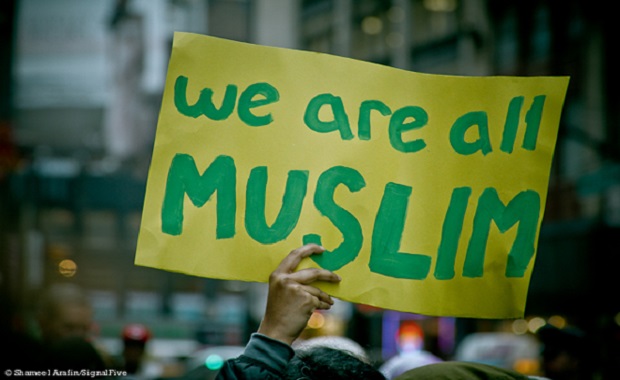
After the autumn/winter 2018 fashion show in Milan, Gucci was criticized on a global scale. During the event, models took the runway wearing turbans, bindis, and hats in the shape of East Asian architecture. The most widespread criticism was due to White, non-Sikh models wearing turbans. For Sikhs, turbans are not fashion objects which can be removed whenever they feel like it. For them, turbans carry significant cultural importance since they are a way of demonstrating faith.
Victoria’s Secret came under similar criticism when one of the models was sent down the runway in a fringed suede bikini, turquoise jewelry, and a feathered headdress. Many called out the lingerie company for insensitivity towards Native Americans, given that the headdress the model was wearing did have spiritual and ceremonial significance. In fact, only certain members of a tribe have the right to wear feathers, usually as a result of honor-worthy achievements and acts of bravery. In other words, you have to earn the right to wear such spiritual garb.
While the fashion industry is routinely singled out as the biggest culprit when it comes to cultural insensitivity and appropriation, they most certainly are not the only ones. All of us need to recognize the damaging impact of cultural appropriation and take steps to mitigate its impact.
While the fashion industry is routinely singled out as the biggest culprit when it comes to cultural insensitivity and appropriation, they most certainly are not the only ones. All of us need to recognize its damaging impact and… Click To TweetUnderstanding Cultural Appropriation
Oxford Dictionary, which only put the phrase into its official lexicon in 2017, defines cultural appropriation as “the unacknowledged or inappropriate adoption of the customs, practices, ideas, etc. of one people or society by members of another and typically more dominant people or society.” This “power imbalance” is significant because it often plays out as members of a dominant culture taking elements from those who have been systematically oppressed.
Take, for example, cornrows, the traditional African style of hair grooming. Fashion models and celebrities have worn cornrows and been praised while doing so. African Americans, on the other hand, are often penalized for the same behavior. In A Point of View: The Absurd Expectation That We All Need to “Fit In,” I cite the 3-0 decision of the 11th U.S. Court of Appeals that ruled in favor of Catastrophe Management Solutions, an insurance-claims processing company in Alabama, that requires all employees to project “a professional and businesslike image.” The company’s decision not to hire a Black woman because of her hairstyle was acquiesced. The white hiring manager told the candidate she could have the job if she changed her hairstyle. In the end, the court asserted that it is legal for companies to refuse employment based on hairstyles. As you can see, the same behavior carries a different impact: one group (the dominant one) is praised for being edgy or stylish, while another is penalized for doing the same thing.
Two other related concepts that are worth mentioning include: cultural exchange and cultural assimilation. In a cultural exchange, individuals who presumably have the same degree of power, embark in a mutually respectful journey of being invited in, engaging with, and, in the process, learning about each other. In a true exchange, you give something and receive another thing in return.
In cultural assimilation situations, though, marginalized groups have no choice but to conform to standards set by the dominant group. In other words, they have to adopt elements of the dominant culture in order to survive conditions that can make their lives more difficult if they don’t. How many indigenous children were punished for speaking their native languages in predominantly white schools? For marginalized groups, the solution is to assimilate/adopt the dominant culture’s traditions and regulations.
The Counter Argument
There are some who believe accusations of cultural appropriation go too far. That is because, for many of us, life itself is one enormous act of cultural appropriation: I may step out of the shower wearing my Japanese kimono, make coffee in my Italian coffee maker (that I bought in Brazil), and, when going out, I may choose to accessorize with jewelry pieces purchased during my international travels. I cannot help but think how boring my life would be if I only had access to, or were only inspired by, my own cultural heritage. To that effect, Jenni Avins (Quartz, 2015) argues that “in the 21st century, cultural appropriation, like globalization, isn’t just inevitable, it is potentially positive…The exchange of ideas, styles, and traditions is one of the tenets and joys of a modern, multicultural society.” Likewise, Susan Scafidi, a lawyer and the author of Who Owns Culture?: Appropriation and Authenticity in American Law argues that “cultural appropriation can sometimes be the savior of a cultural product that has faded away.”
For centuries, civilizations have been borrowing from each other. Our democratic system began with the work of a man named Cleisthenes, in Athens in 510 BC. Nearly all alphabetic scripts used throughout the world today go back to the writing system used in the Semitic languages of the Middle East. Our numeral system, also called Hindu-Arabic numeral system, was developed by two Indian mathematicians. In essence, appropriating elements from another culture isn’t always inappropriate and, in fact, has benefitted many civilizations.
The problem arises when somebody takes something from another culture in a way that members of that culture find detrimental and offensive—like sending white models down the runway wearing turbans. In such cases, members of the marginalized group don’t have a say in the fact that their cultural heritage is being used in the name of fun or fashion, in a stereotypical way, and, most troublesome, out of ignorance.
When is Cultural Appropriation Inappropriate?
In the article, What’s Wrong with Cultural Appropriation? These 9 Answers Reveal Its Harm, Maisha Johnson expertly elaborates on the impact of cultural appropriation. Below are just a few of the reasons:
- When it trivializes violent, historical oppression
Let us look at both sides of the argument surrounding the name “Redskins.” The owners and fans of the NFL team believe they are honoring Native Americans, as well as keeping to tradition since the team was named in 1933. For them, the indigenous activists who are calling for a name change are being too sensitive. For native people, though, the term “Redskins” carries an entirely different connotation: it reminds them of the time when the colonial and state governments and companies paid white people to kill Native Americans and use their scalps— “red skins”—as proof of their “Indian kill.” We have to ask ourselves: Where is the honor in celebrating genocide for profit?
- When it rewards some while the creators themselves never get credit for it
This is particularly true in the music industry, whose tradition of “borrowing” from Black artists and promoting white artists over more talented Black artists, continues to bring the record industry enormous profit. Elvis Presley has always been hailed as the “king of rock and roll.” The reality is that rock and roll came out of the blues music genre and was initially largely shaped by Black artists. However, whites were not inclined to support a Black artist in the 1950s. So, the record industry promoted Elvis, and other white stars, while those who actually created rock and roll never received credit for it. - When it spreads lies about marginalized cultures
Native Americans in the 18th and 19th centuries were often portrayed as savages who killed and/or captured whites, especially women. Native men were consistently depicted overpowering terrified, white women, who needless to say, were sure to suffer indescribable horrors in their hands. The reality, however, was that whites killed many defenseless Native women and children, took captives, and tortured them. The story of Pocahontas, whose given name was Matoaka, is another example of the many inaccuracies spread about indigenous people in this country. Pocahontas was, in fact, abducted as a teenager, forced to marry an Englishman (not John Smith), and used as propaganda for racist practices before she died at the age of 21. - When it perpetuates racist stereotypes
In the 2013 American Music Awards, Katy Perry performed as a geisha. Her intention may have been to honor the Japanese culture. Instead, she ended up using her music to perpetuate the common stereotype of Asian women as passive, submissive, sexual objects. While Perry was “in character,” Asian women have to constantly live with the consequences of racialized sexual harassment. They are often expected to live up to the “exotic geisha girl” stereotype of being sexually submissive and docile. Lauren Smash described her experiences in, Yellow Fever: Dating as an Asian Woman, as follows: “It is dehumanizing at best to constantly be compared to a stereotype and to have people chasing you not as a person, but as an embodiment of the stereotypes that they use to define you.” At the end of the show, Perry could return to her normal life. Asian women, on the other hand, have to constantly deal with the racist and sexist social norms that Perry helped perpetuate, which is what happens when the only mainstream image of your sexuality is a negative stereotype frequently reinforced by cultural appropriation.
Conclusion
Cultural appropriation is harmful and indefensible. It is not, as many think, a way for one culture to honor another. Needless to say, we have a lot of work to do to mitigate the harmful impact of oppression and the ways some groups still dehumanize, ostracize, and marginalize others.
Cultural appropriation is harmful and indefensible. It is not, as many think, a way for one culture to honor another. Click To TweetI am not advocating for individuals, for example, to stop enjoying Mexican food if they are not Mexican, stop using their Bialetti coffee makers if they are not Italian, or stop using any other culturally-specific practice. I am suggesting that we (1) be thoughtful before adopting practices from other cultures, (2) be diligent about challenging our stereotypes, and (3) make a point of learning about oppressed people’s struggles.
We all have choices to make when it comes to sensitivity toward others. As members of a majority, we may have the privilege of not being able to recognize harmful appropriation unless it’s pointed out. We also need to be aware of the reasons why we are borrowing something that represents another culture. In A Guide to Understanding and Avoiding Cultural Appropriation, Nadra Kareem Nittle suggests we ask ourselves a series of questions in order to avoid cultural appropriation. For example:
- Why am I “borrowing” this? Is it out of a genuine interest or is it because it looks appealing and I am following the trends? How would someone from that group feel about it?
- What is the source? For material items such as artwork, was it made by someone from that culture? What does this item mean to them? Let us all remember that sacred artifacts are never, ever to be used as accessories!
- How respectful is this to the culture? Am I contributing to others’ knowledge and understanding or, in fact, am I spreading stereotypes about that cultural group?



















As a Mexican-American, I have long excelled in the practice of ‘cultural acquiescence’ by speaking like a white Michigander. Not to mention my sporting of the nautically-inspired ‘preppy’ look that is so reminiscent of that state. When I traveled to Michigan nearly thirty-six years ago with both my mother and my younger (half)-brother to spend ‘quality time’ with a blended family whom my mother has known for years, I was expected to suppress my propensity to wear my ethnicity too proudly. The ‘sensibilities’ of the family matriarch have always gravitated toward the Deep South. This would entail that I not behave like a ‘stereotypical’ Chicano from (East) Los Angeles, CA. At that time, there were not that many Mexican-Americans residing in both Macomb and Oakland Counties.
I don’t like stereotypes, but it’s hard when people in a certain group act like the stereotype. I’ve lived in Canada for most of my life. I believe in learning about other groups. I don’t have a problem with so-called cultural appropriation because cultures have been appropriating from each other for millennia. Who’s to say exactly where and when a cultural practice was adopted. Maybe a better word is cultural exploitation rather than cultural appropriation.
I found the article interesting. For me, a huge part of adopting items from other cultures is based on my travels and what I can learn from visiting different places. To use your own example, it seems perfectly natural that one might wear jewelry acquired during one’s travels, and it makes sense to make coffee in an Italian coffeemaker because of Italy’s strong coffee culture. That being said, it is highly unlikely that you would slip into a kimono after your shower though you might use a yukata as a bathrobe. I believe that if one is going to adopt items and practices from other cultures one has the responsibility to know their history and, at the very least. their proper name, so that any form of cultural appropriation becomes a mark of respect and appreciation..